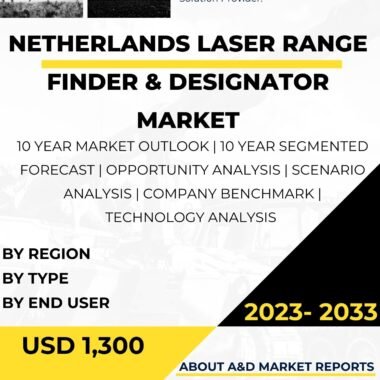Description
Brass Demand in Aerospace in the Australian Defense Industry
The brass demand in aerospace in Australia highlights its crucial role in both military and civil aviation. Brass, valued for its corrosion resistance, electrical conductivity, and machinability, is essential in numerous components and systems. Its use directly enhances the reliability, safety, and efficiency of aircraft and defense equipment.
Military Applications Driving Brass Demand in Aerospace
In the military, brass alloys are extensively used in ammunition casings and shell components. Their ability to withstand high pressures and temperatures makes them ideal for these applications. The Australian Defence Force (ADF) relies on brass to ensure safe and effective operation of artillery and small arms, supporting the readiness and capabilities of the nation’s armed forces.
Brass is also vital for electrical and electronic systems in military aircraft. Its excellent conductivity and corrosion resistance make it suitable for wiring, connectors, and other critical components. These systems power communication, navigation, and avionics equipment—key factors in mission success.
Civil Aviation Uses and Brass Demand in Aerospace
In civil aviation, brass alloys serve in hydraulic systems, instrumentation, and structural components. Their resistance to corrosion enhances the longevity and reliability of hydraulic fittings and connectors, ensuring safety and performance in commercial and private aircraft. Brass is also used in precision components, which are critical for aircraft functionality and overall operational efficiency.
Tools and Maintenance Applications
Brass is essential in aerospace and defense maintenance. Brass tools are non-sparking, making them safe to use in environments with flammable materials or explosive atmospheres. These tools improve safety and efficiency during the maintenance of aircraft and defense equipment.
Innovation and Research Supporting Brass Demand in Aerospace
The growth of brass demand in aerospace is supported by research and development. Defense contractors, research institutions, and government agencies collaborate to develop advanced brass alloys tailored for aerospace and defense applications. These innovations ensure brass remains a reliable and versatile material, strengthening Australia’s defense and aviation capabilities.
Conclusion
The rising brass demand in aerospace underscores its vital role in Australia’s aerospace and defense industry. From ammunition production to electrical systems and maintenance tools, brass is indispensable. As technology evolves, brass will continue to support safety, reliability, and excellence in aviation and defense.
Table of content
Table Of Contents
1 Market Introduction
1.1 Market Introduction
1.2 Market Definition
1.3 Market Segmentation
1.4 10 Year Market Outlook
2 Market Technologies
3 Global Market Forecast
3.1 Global Market Forecast
3.2 By Component
3.3 By Process
4 APAC Market Trends & Forecast
4.1 Drivers, Restraints And Challenges
4.2 PEST
4.3 Market Forecast
4.3.1 Market Forecast By Component
4.3.2 Market Forecast By Process
4.4 Scenario Analysis
4.5 Key Companies& Profiling
5 Australia Analysis
5.1 Current Levels Of Technology Maturation In This Market
5.2 Market Forecast
5.2.1 Market Forecast By Component
5.2.2 Market Forecast By Process
5.3 Scenario Analysis
5.4 Country Defense Budget (Historical and 10- year forecast)
5.5 Defense Budget Category Spending- 10- year forecast
5.6 Procurement Analysis
5.7 EXIM Data
5.8 Patents
6 Opportunity Matrix
6.1 By Component
6.2 By Process
7 Scenario Analysis
7.1 Scenario 1
7.1.1 By Component (Scenario-1)
7.1.2 By Process(Scenario-1)
7.2 Scenario 2
7.2.1 By Component (Scenario-2)
7.2.2 By Process(Scenario-2)
8 Company Benchmark
9 Strategic Conclusions
10 About Aviation And Defense Market Reports
Segments
By Component
By Process
List of Tables
Table1: Global Market Forecast, Brass demand in Aerospace & Defense Industry
Table2: APAC Market Forecast, Brass demand in Aerospace & Defense Industry
Table3: APAC Market Forecast, By Component
Table4: APAC Market Forecast, By Process
Table5: APAC, Scenario Analysis
Table6: Australia Market Forecast, Brass demand in Aerospace & Defense Industry
Table7: Australia Market Forecast, By Component
Table8: Australia Market Forecast, By Process
Table9: Australia, Scenario Analysis
Table 10: Australia Defense Budget 10 Year Forecast
Table 11: Australia, Defense Budget Category Spending- 10- year forecast
Table 12: Australia, Procurement Analysis
Table 13: Australia, EXIM Data Analysis
Table 14: Australia, Opportunity Analysis, By Component
Table 15: Australia, Opportunity Analysis, By Process
Table 16: Australia, Scenario Analysis, By Component
Table 17: Australia, Scenario Analysis, By Process
Figure 1: Market Segmentation, Australia Brass demand in Aerospace & Defense Industry
Figure 2: Key Technology Analysis, Brass demand in Aerospace & Defense Industry
Figure 3: Global Market Forecast, Brass demand in Aerospace & Defense Industry
Figure 4: APAC, Market Forecast, Brass demand in Aerospace & Defense Industry
Figure 5: APAC, Market Forecast, By Component
Figure 6: APAC, Market Forecast, By Process
Figure 7: APAC, Scenario Analysis
Figure 8: Australia, Market Forecast, Brass demand in Aerospace & Defense Industry
Figure 9: Australia, Market Forecast, By Component
Figure 10: Australia, Market Forecast, By Process
Figure 11: Australia, Scenario Analysis
Figure 12: Australia, Defense Budget 10 Year Forecast
Figure 13: Australia, Defense Budget Category Spending- 10- year forecast
Figure 14: Australia, Procurement Analysis
Figure 15: Australia, EXIM Data Analysis
Figure 16: Australia, Opportunity Analysis, By Component
Figure 17: Australia, Opportunity Analysis, By Process
Figure 18: Australia, Scenario Analysis, By Component
Figure 19: Australia, Scenario Analysis, By Process
Figure 20: Company Benchmark




